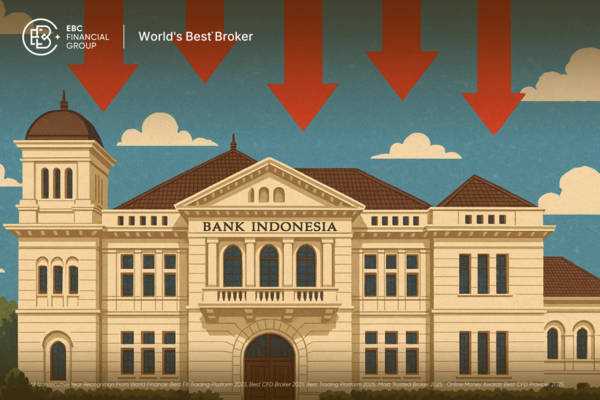In forex, one of the most powerful catalysts of currency fluctuations is central bank policy. While supply and demand, political instability, and investor sentiment all influence markets, central banks establish the core direction of exchange rates through their monetary actions. Whether setting interest rates, targeting inflation, or intervening in markets, central banks can trigger abrupt volatility or lasting changes in currency values.
For traders, understanding how central bank policies impact forex is not optional. It is central to developing a disciplined trading strategy that anticipates price movements, reduces risk, and takes advantage of opportunities. This article explores the influence of central bank policies on forex trading, explaining why they matter, how they function, and what retail traders can do to incorporate them into their approach.

Interest Rates as the Main Driver
Interest rate policy is the most decisive factor in how central bank actions impact forex. Currencies with high interest rates attract capital, while those with low rates lose appeal. This dynamic is why traders closely follow central bank rate decisions.
For instance, when the Federal Reserve embarked on aggressive rate hikes in 2022, the US dollar surged to multi-decade highs against peers like the euro and yen. Investors moved capital into US assets to benefit from higher yields, and the dollar’s value rose accordingly. Conversely, Japan’s decades-long policy of keeping rates near zero has consistently weakened the yen, making it a funding currency in global markets.
Forex traders cannot afford to ignore these moves. By anticipating rate decisions based on inflation reports, employment data, and central bank statements, traders can position themselves advantageously.
Inflation Control and Currency Value
Another primary way central bank policies affect forex is through inflation management. Most central banks target inflation near 2%. When inflation climbs above this, central banks typically raise rates to curb demand, often strengthening the currency. If inflation falls too low, they lower rates or inject liquidity, which usually weakens the currency.
Consider the European Central Bank during the sovereign debt crisis. Concerned about deflationary pressures, the ECB kept rates low and launched unconventional measures such as quantitative easing. This policy weakened the euro for years, creating clear trading opportunities for those who anticipated the impact.
For traders, inflation data releases become critical moments. They often indicate the direction of future policy moves and, therefore, currency performance.
Direct Interventions in the Forex Market
Sometimes central bank policies involve direct intervention in forex markets. A bank may buy or sell its currency to influence its value. These interventions are most common in export-driven economies that want to avoid excessive currency strength.
The Bank of Japan has intervened multiple times to weaken the yen, while the Swiss National Bank has taken steps to prevent the franc from becoming too strong. For traders, interventions create sudden volatility and can reset market trends overnight. Monitoring economies with a history of intervention is therefore essential.
The Power of Communication
Central bank policies are not only about actions but also about communication. Forward guidance—the practice of signalling future policy moves—has become a powerful tool. Even if rates remain unchanged, a statement suggesting future hikes or cuts can move currencies immediately.
For example, when the Federal Reserve indicates a hawkish stance in its statements, the dollar often strengthens before any actual rate changes occur. Conversely, dovish language can weaken it.
Traders must learn to interpret central bank language, reading between the lines of speeches, press releases, and meeting minutes. Subtle shifts in tone often precede major policy changes, and those who notice early gain an advantage.
Case Study: The Bank of Japan and Yen Weakness
In contrast, the Bank of Japan’s decades-long policy of maintaining near-zero interest rates has kept the yen weak. This policy makes Japanese assets less attractive to investors but supports export competitiveness. Traders often take advantage by engaging in carry trades—borrowing yen cheaply to invest in higher-yielding currencies.
Understanding the BOJ’s consistent dovish stance allows forex traders to predict long-term yen weakness, providing a strategic framework for JPY pairs.

Risks of Trading Central Bank Announcements
While central bank policies create opportunities, they also introduce risks. Policy announcements often cause extreme volatility. Prices may whipsaw in both directions before settling. Spreads can widen dramatically, and slippage may occur.
For example, a rate hike may be announced, but dovish language in the policy statement could cause the currency to fall instead of rise. Traders who rely on a single indicator or overleverage themselves during such events risk significant losses.
Managing risk through stop-losses, smaller position sizes, and careful timing is essential when trading around central bank decisions.
Building a Strategy Around Central Bank Policies
Incorporating central bank policies into forex strategies requires discipline. Some traders focus on event-driven strategies, entering and exiting around policy meetings. Others use trend-following approaches, aligning trades with the broader direction signalled by central banks. Position traders may even base entire portfolios on expected policy shifts.
The key is consistency. Traders must decide in advance how they will react to policy events rather than making emotional choices in the moment. Testing strategies in demo environments helps build confidence before applying them live.
Final Thoughts
Central bank policies are among the most powerful forces shaping forex markets. Interest rate decisions, inflation control, quantitative easing, interventions, and forward guidance all contribute to currency fluctuations. For traders, understanding these policies is not simply helpful—it is essential.
By studying central bank goals, monitoring economic indicators, and interpreting policy communications, traders can anticipate market movements with greater accuracy. While risks remain, disciplined strategies built around central bank policies provide a clear advantage in navigating the complexity of forex markets.
Disclaimer: This material is for general information purposes only and is not intended as (and should not be considered to be) financial, investment, or other advice on which reliance should be placed. No opinion given in the material constitutes a recommendation by EBC or the author that any particular investment, security, transaction or investment strategy is suitable for any specific person.


























